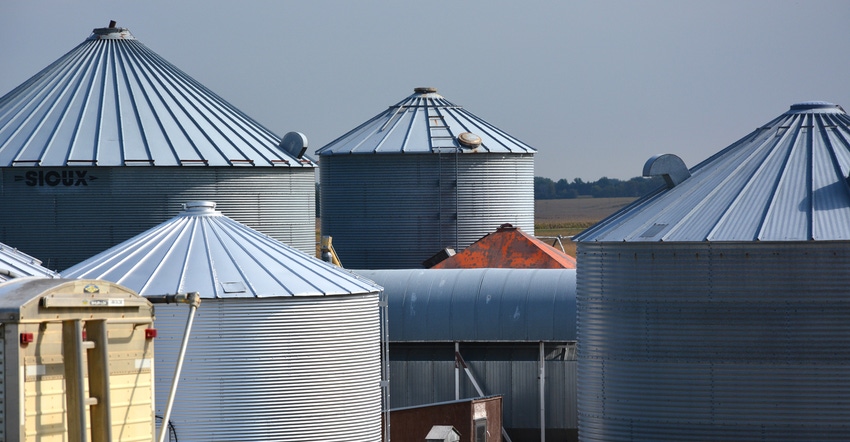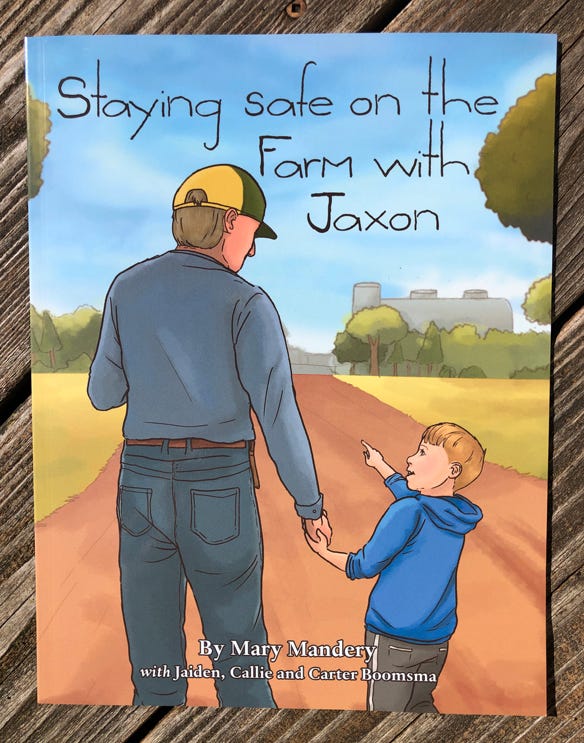
Harvest season is fast approaching — and with it, reminders of grain bin safety.
Nate Firle, a farmer and firefighter with Gibbon, Minn., Fire and Rescue, is intent on empowering neighbors, farmers and area fire departments with ag safety skills, particularly around grain bins.
 LESSONS LEARNED: Farmer and firefighter Nate Firle of Gibbon, Minn., participated in a grain bin rescue in October 2019. The farmer survived the accident. Firle has since made it his mission to help educate farmers and rescue crews about grain bin safety and extraction techniques.
LESSONS LEARNED: Farmer and firefighter Nate Firle of Gibbon, Minn., participated in a grain bin rescue in October 2019. The farmer survived the accident. Firle has since made it his mission to help educate farmers and rescue crews about grain bin safety and extraction techniques.

In October 2019, Firle was part of a grain bin rescue that involved his neighbor. The effort, involving 28 people and multiple rescue departments, took nearly two hours to free his friend, who survived the ordeal.
Numerous lessons were learned following that life-altering experience, and Firle has been sharing them with others. He gave a presentation on grain bin safety in July to attendees at the Minnesota and South Dakota Farm Bureau LEAP (Leadership Education Advocacy Promotion) conference in Sioux Falls, S.D.
4 danger zones
Firle explained that there are four danger zones with bins and grain: When the bin is getting filled, when a grain crust bridge forms, when a cavity forms underneath the grain and when a vertical wall develops. In all four circumstances, a person should not enter alone or be working alone. Yet, people do.
“Stop, think. What’s your plan?” Firle asked.
He proposed the following before entering a bin:
Have a buddy system. Always have two people on a project. Often when accidents happen, the person is working alone, and hours pass before he or she is missed.
Always shut off power before you enter. “Never enter a bin while unloading grain, because flowing grain can pull you in and bury you within seconds,” Firle said.
Wear a safety harness. Some might balk at this since it’s not convenient to wear, or you don’t know where to hook it up. Check with the bin manufacturer for placement.
Break up clumps or bridges from a safe distance. Never walk on the grain to make it flow. Remember those danger zones? Also, break up vertical grain walls starting at the top, not the bottom. Starting at the bottom can cause the wall to collapse and bury you in falling grain.
Firle offered a fast way to calculate grain entrapment — the 1:10:1 rule: A 1-foot grain bridge that is knocked loose in a 10-foot-diameter bin will fill the “cone” near the sump with 1 foot of grain.
“This means that in a 40-foot diameter bin, a 1-foot grain bridge knocked loose can fill the cone one is standing in with four 4 feet of grain,” Firle said. “And at this point, that is considered an entrapment.”
Normally, grain flows to the bin’s center. With a side pump, it can still bridge and form a cavity. Firle suggested making a mark or adding a reflector on the bin’s inside wall so you could better see uneven grain flow when emptying a bin.
Test air quality before you enter a grain bin. Push air through grain a day or two before you enter. Wear an appropriate grain dust respirator.
Label controllers and breakers. A diagram of your grain bin system also helps others identify components and power quickly.
If you are the first person to respond to a person trapped in a grain bin, here is what Firle says to do:
• Call 911 immediately.
• Do not jump into the grain bin. Be aware that if you enter the bin, you can worsen the situation.
• Turn on grain bin aeration.
• Disconnect power to augers. Turn off power or cut drive belts.
• “Say ‘1-10-1’ three times,” Firle added, “before you go into a bin.”
From tragedy, a very special farm safety book for children
A tragic farm accident that claimed the life of a 7-year-old Yankton, S.D., boy prompted his family to channel their profound sadness into action.

FOR JAXON: The family of Jaxon Boomsma, Yankton, S.D., authored a children’s farm safety book in memory of the 7-year-old who died in a farm accident in 2017.

In April 2017, young Jaxson Boomsma died from a tractor accident on the farm. As his family made their way along their grief journey, they decided to honor the memory of their son and brother by creating a memorial fund and promoting farm safety for kids. They soon learned that there were no children’s books available about on-farm safety. So, they produced their own, titling it “Staying Safe on the Farm with Jaxon.”
The colorful book, written by Mary Mandery and co-authored by Jaxon’s siblings — Jaiden, Callie and Carter — concludes with a simple quiz to check the reader’s understanding.
Through the Jaxon Boomsma Memorial Fund, the family has offered funding for farm safety programs, enhanced community parks and provided scholarships for college-bound ag students.
“As a family, we wanted to be able to keep Jaxson’s smile alive by helping make the places he loved safer and more beautiful for other kids,” his family wrote on the book’s memory page. “We also want to prevent more accidents from taking young lives too soon.”
Learn more about the Boomsmas’ journey on their Facebook page, facebook.com/jaxonboomsma23.
To order the book, contact your local bookstore or WestBow Press, Bloomington, Ind., at 866-928-1240.
About the Author(s)
You May Also Like






